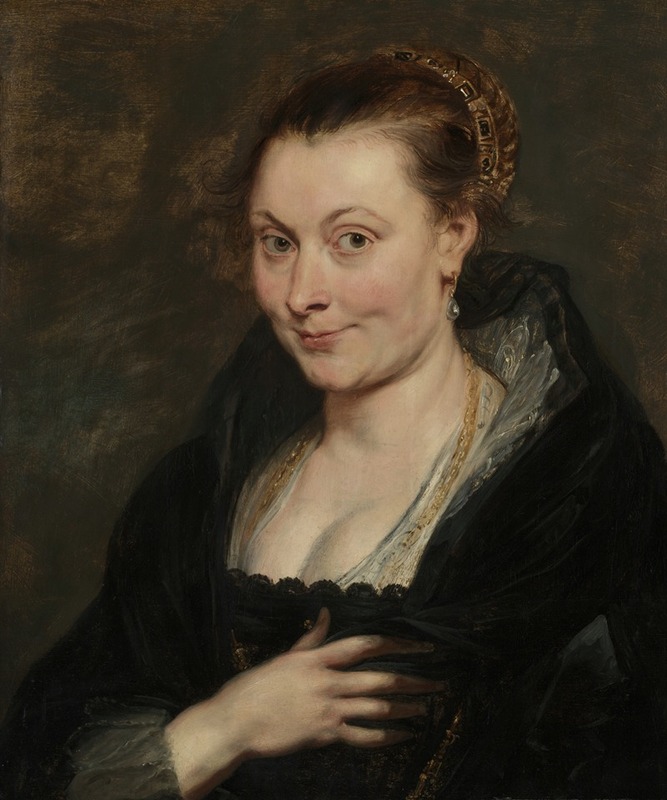
Portrait of Isabella Brant
A hand-painted replica of Peter Paul Rubens’s masterpiece Portrait of Isabella Brant, meticulously crafted by professional artists to capture the true essence of the original. Each piece is created with museum-quality canvas and rare mineral pigments, carefully painted by experienced artists with delicate brushstrokes and rich, layered colors to perfectly recreate the texture of the original artwork. Unlike machine-printed reproductions, this hand-painted version brings the painting to life, infused with the artist’s emotions and skill in every stroke. Whether for personal collection or home decoration, it instantly elevates the artistic atmosphere of any space.
The "Portrait of Isabella Brant" is a renowned painting by the Flemish Baroque artist Peter Paul Rubens. Created around 1621, this portrait is a testament to Rubens' mastery in capturing the essence and character of his subjects. Isabella Brant was Rubens' first wife, and their marriage was a significant part of his personal life, influencing his work during their years together.
Rubens married Isabella Brant in 1609, and she became a frequent subject in his paintings. The portrait is celebrated for its intimate and affectionate portrayal of Isabella, reflecting not only her physical appearance but also her personality and status. Rubens' ability to convey warmth and depth in his portraits is evident in this work, showcasing his skill in rendering textures, fabrics, and the subtleties of human expression.
In the "Portrait of Isabella Brant," Rubens employs a rich palette and dynamic brushwork, characteristic of the Baroque style. The painting is noted for its attention to detail, particularly in the depiction of Isabella's attire and the intricate lacework, which highlights her status and the fashion of the time. The background is typically subdued, focusing attention on the sitter, a common technique used by Rubens to emphasize the subject's presence and character.
Rubens' portraits often went beyond mere representation, capturing the spirit and vitality of his subjects. In this portrait, Isabella Brant is depicted with a gentle expression and a slight smile, suggesting a sense of calm and poise. Her gaze meets the viewer's, creating a connection that transcends the canvas. This approach to portraiture was innovative for its time and contributed to Rubens' reputation as one of the leading portraitists of the Baroque period.
The painting is also significant for its personal context. Rubens and Isabella shared a deep bond, and this is reflected in the tenderness with which he painted her. Their marriage lasted until Isabella's untimely death in 1626, and during this period, she was a source of inspiration and support for Rubens. The portrait not only serves as a representation of Isabella but also as a testament to their relationship.
Today, the "Portrait of Isabella Brant" is housed in the Alte Pinakothek in Munich, Germany. It remains an important work within Rubens' oeuvre, admired for its technical brilliance and emotional depth. The painting continues to be studied and appreciated for its insight into Rubens' personal life and his approach to portraiture.
Rubens' legacy as a master of the Baroque is reinforced by works such as this, which demonstrate his ability to blend realism with idealism, capturing the essence of his subjects with both accuracy and empathy. The "Portrait of Isabella Brant" stands as a lasting tribute to both the artist's skill and the enduring influence of his first wife on his life and work.


















